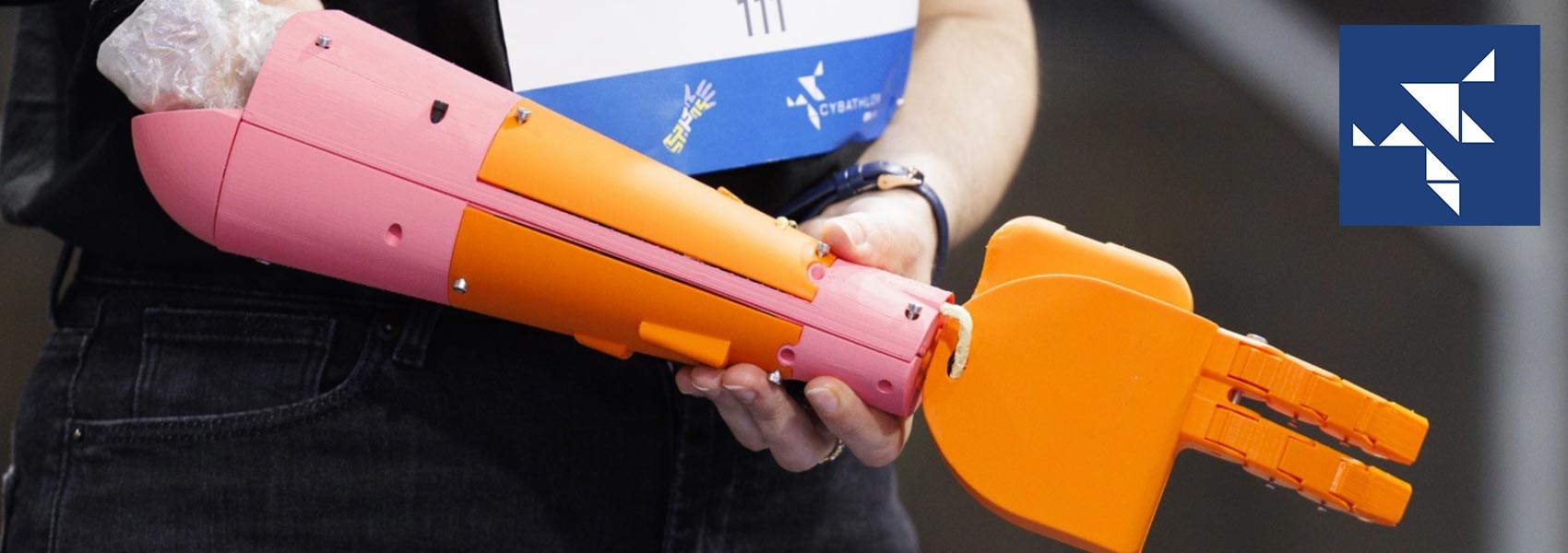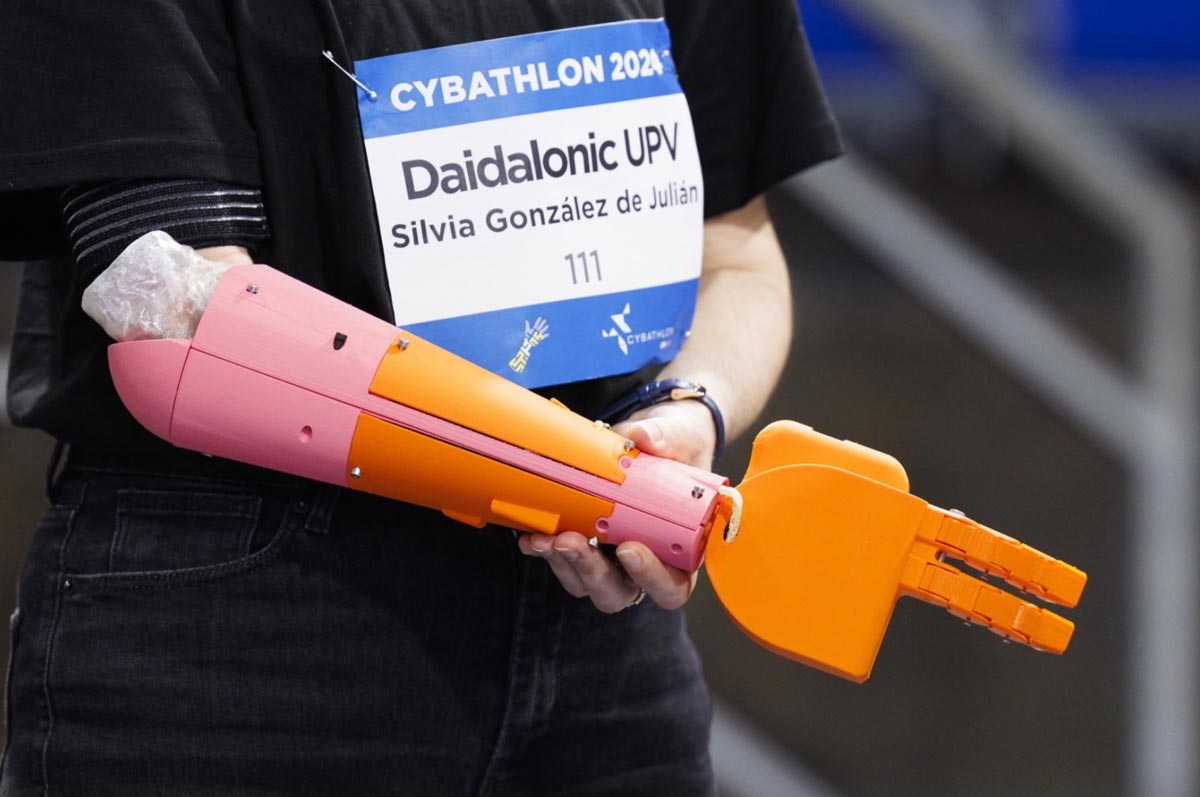Daidalonic UPV ’s Path to Smarter Prosthetics

Daidalonic is a students’ group belonging to the Generación Espontánea program from the Universitat Politècnica de València, in Spain. Guided by our slogan “moving the engines of life”, we are dedicated to designing biomedical equipment aimed at improving people’s quality of life, in particular children with amputations or physical deformities.
Our first initiative focused on designing an expandable myoelectric pediatric forearm prothesis. The goal was to create a prothesis actioned by the electrical impulses generated by the user’s muscle movements, aiming to fit children throughout their entire growing era. The pilot would be able to exchange parts for bigger ones or extend sections of the prothesis, addressing the problem most children lacking extremities face, their prostheses usually become too small every few months, having to acquire an entirely new one frequently.
In order to start with manageable steps, we decided to focus on designing a myoelectric forearm prothesis destined for an adult pilot. This project culminated in our first functional prototype, the Upper2.

The Upper2 was designed last summer with the hopes of participating in the Cybathlon, a global assistive technology championship, celebrated by ETH Zurich, in which some of the top biomedical companies worldwide compete. We would register with Silvia González de Julián, our pilot and one of our university professors.
We managed to qualify successfully, passing every TechCheck, a series of tests to ensure the security and the correct functionality of the prothesis. Among the technical requirements, it was asked for the prothesis to include a switch that would disconnect the power supply and a button to set the security state. With everything set, we started setting off in our trip to Switzerland.
During the championship, the pilot was able to successfully complete a task where it was required to move cutlery, plates and mugs from a table into a rack and sort them out using solely the prothesis. The second task that was attempted consisted of building a pyramid of glasses. An error disqualified us from this task; however, our pilot finished on time without making any further mistakes.

Upon returning to Spain, the team was feeling proud of achieving the goal of participating in a global competition and finishing in 12th place. During the time there, it was also possible to exchange knowledge with other contestants, so we gathered plenty of new information and strategies to be able to improve our work in the future. For instance, we are considering the implementation of gyroscopes and accelerometers in the prothesis to gather more valuable information from the movement of the pilot. The competition also motivated some of our members to start researching the integration of electroencephalographic sensors into our project.
The forearm prothesis designed for the competition was capable of moving two fingers simultaneously controlled by myoelectrical impulses, as well as a manual thumb. Therefore, a commercialized EMG sensor was included, providing the microcontroller, an ESP32, with a differential signal from the biceps of the pilot. This signal was processed to discern from activation and deactivation of the muscle.
The fingers were driven by a DC motor attached to a rotational encoder that would inform the microcontroller about the movement done by the motors and, consequently, the current position of the fingers could be tracked. For choosing among the various functionalities of the prothesis, a button was implemented in an accessible location for the pilot, this button would also trigger the security state. And finally, two RGB LEDs were included close to the button to provide feedback about the status of the system and the batteries. All these components, the wiring and the power supply were welded by hand onto a perforated board, defining the control board.
Throughout the assembling and transporting process of the prothesis, we faced several issues, some of them due to imperfections in the soldered connections. Even though these problems were eventually sorted for the competition, the need to avoid more short circuits and for a minimized system made clear that designing the control board in PCB format was the safest option for the future.
Therefore, the Hardware section started the semester after the Cybathlon learning the techniques of PCB designing. Each member put together their own control board and was able to print it thanks to the sponsorship of Eurocircuits. Being able to work hands-on with their own model enabled us to identify areas for improvement of their designs that will be crucial when the time to conceive the final version of the board comes.

During this second semester, our members will redesign the control board, adding more sensors and updating some components to improve the prothesis’ performance. An example of these changes will be a second DC motor will be integrated to automate the movement of the thumb finger. Also, to have better feedback of the position of every finger, flexion sensors will be implemented.
As another development for the future, thanks to a former member of Daidalonic that designed the amplifiers and filters for an EMG sensor, it will be possible to design our own bespoke sensor on PCB, and therefore not relying on commercial options. Furthermore, including more than one EMG sensor is one of our goals, and therefore we also intend to design a system that would include two sensors on one single PCB board. These boards will be printed in Eurocircuits’ facilities, which provides an essential resource for achieving our goals.
The improvements that we are expecting on the prothesis will be tested closely, as we will be participating again in an arm prothesis competition in Castellón next May. This competition is being hosted by the group UJI-Hand from Universitat Jaume I and different Spanish student organizations designing forearm prothesis will be competing against other displaying the capabilities of the models to perform a series of daily tasks. Some of these teams also competed in the Cybathlon last October.
At Daidalonic we are committed to doing everything in our hands to help improve lives. These competitions help us improve our prototypes and keep moving closer to our goal and competing is possible thanks to the support of sponsors like Eurocircuits and UPV institutions.

For more information please visit the Daidalonic UPV website.





